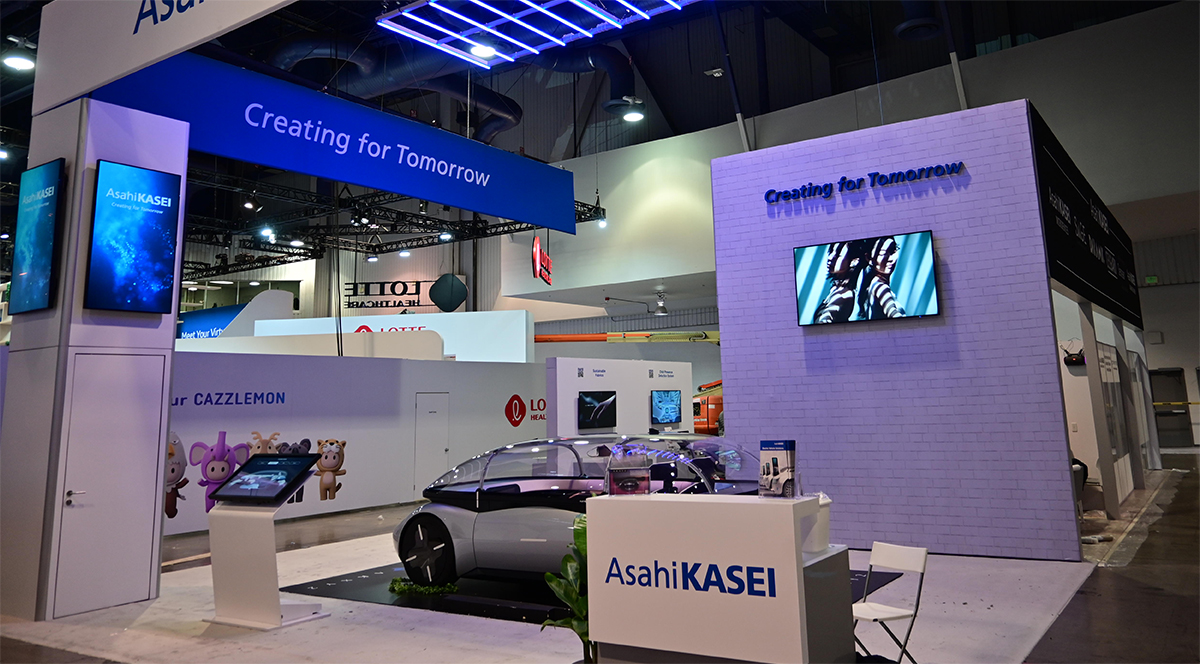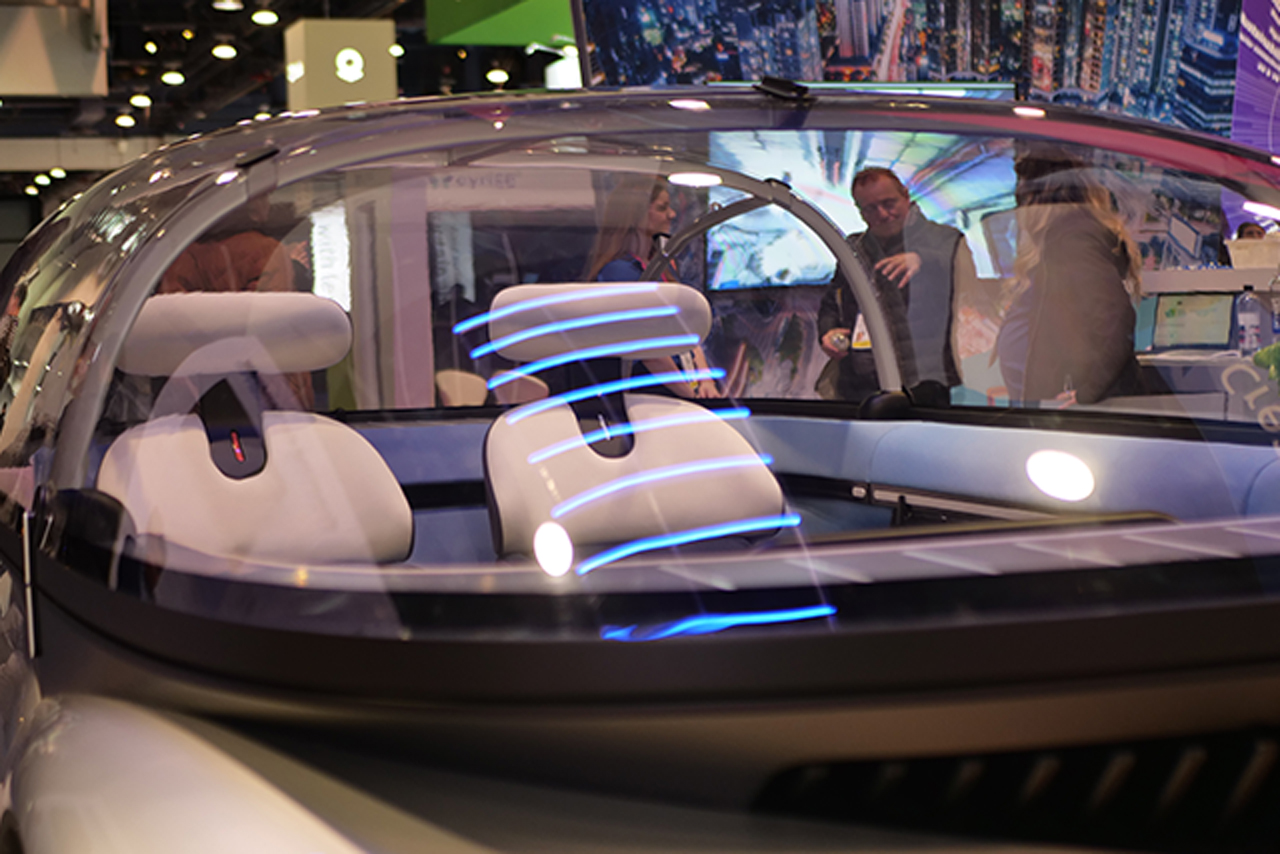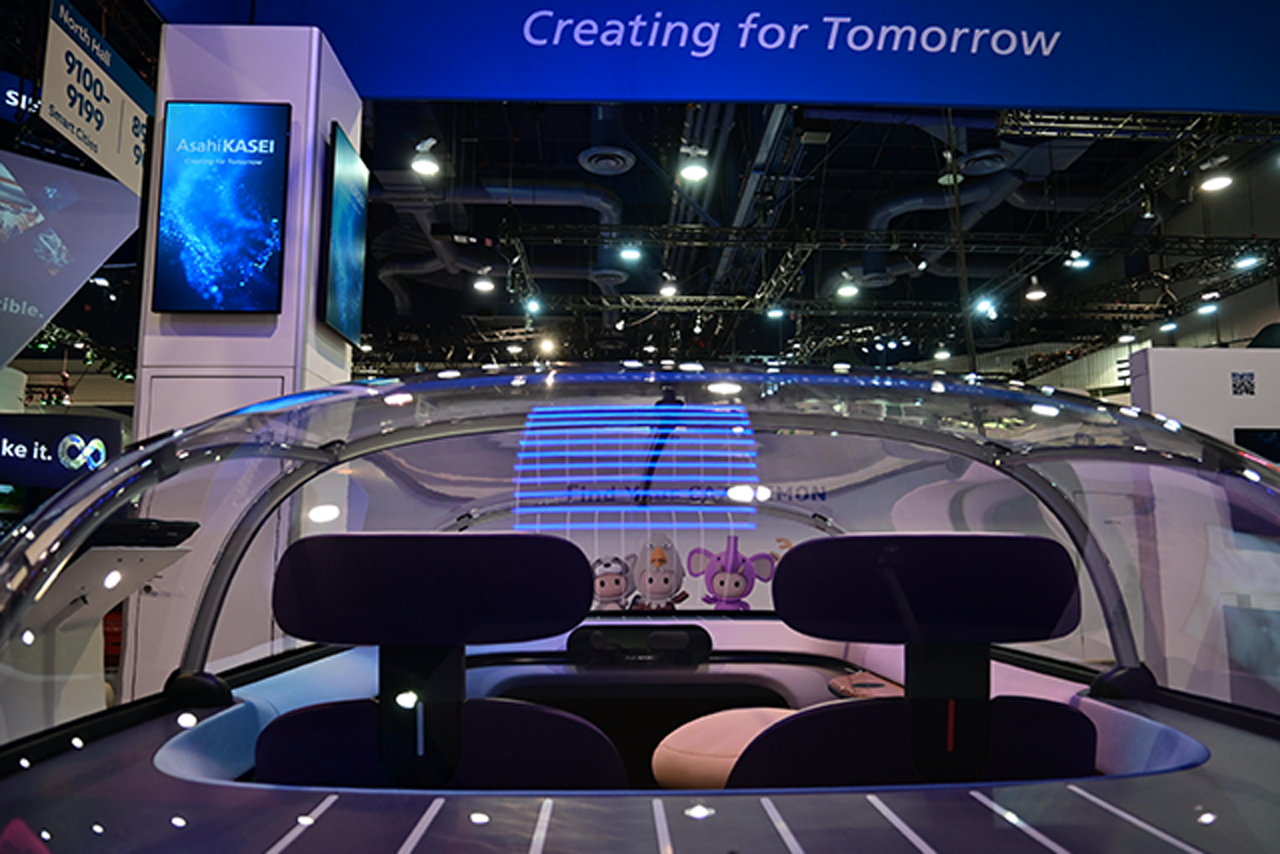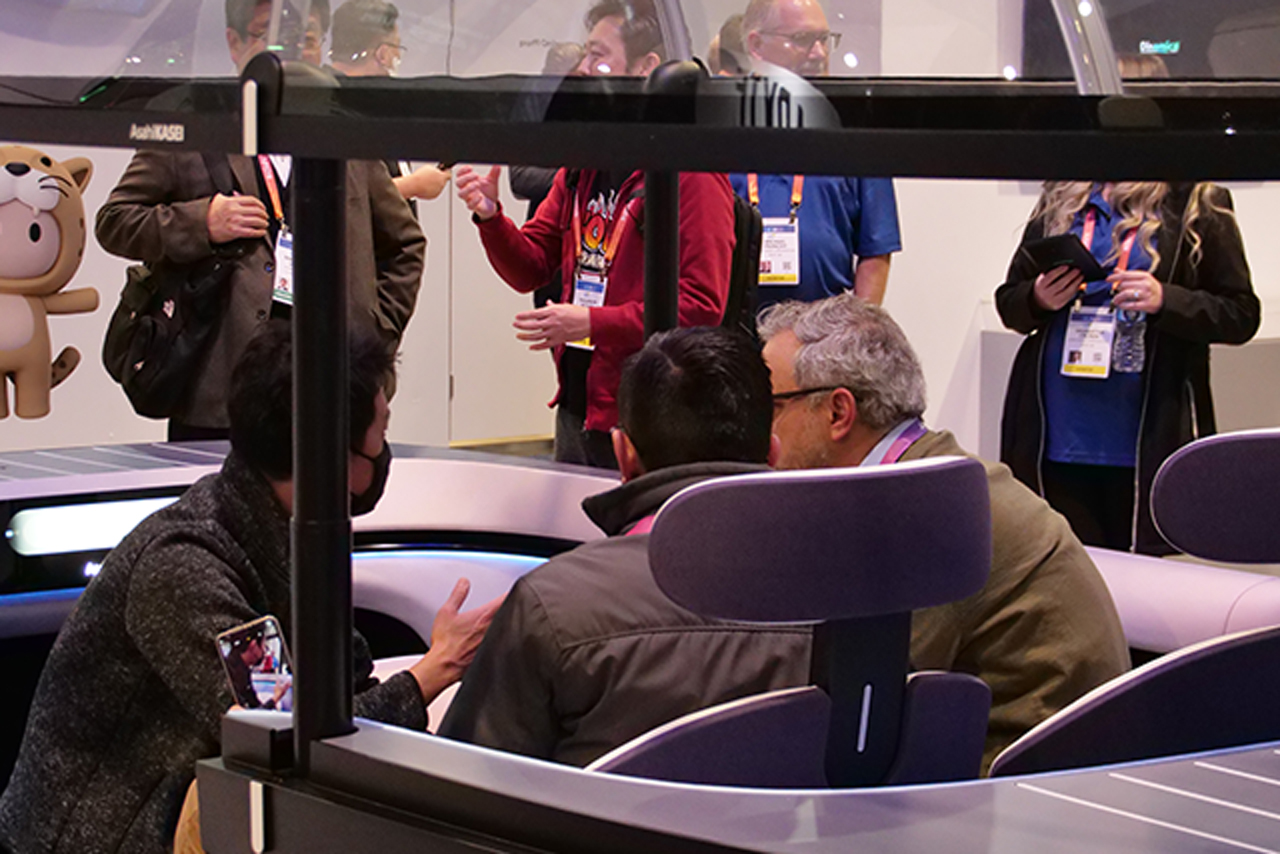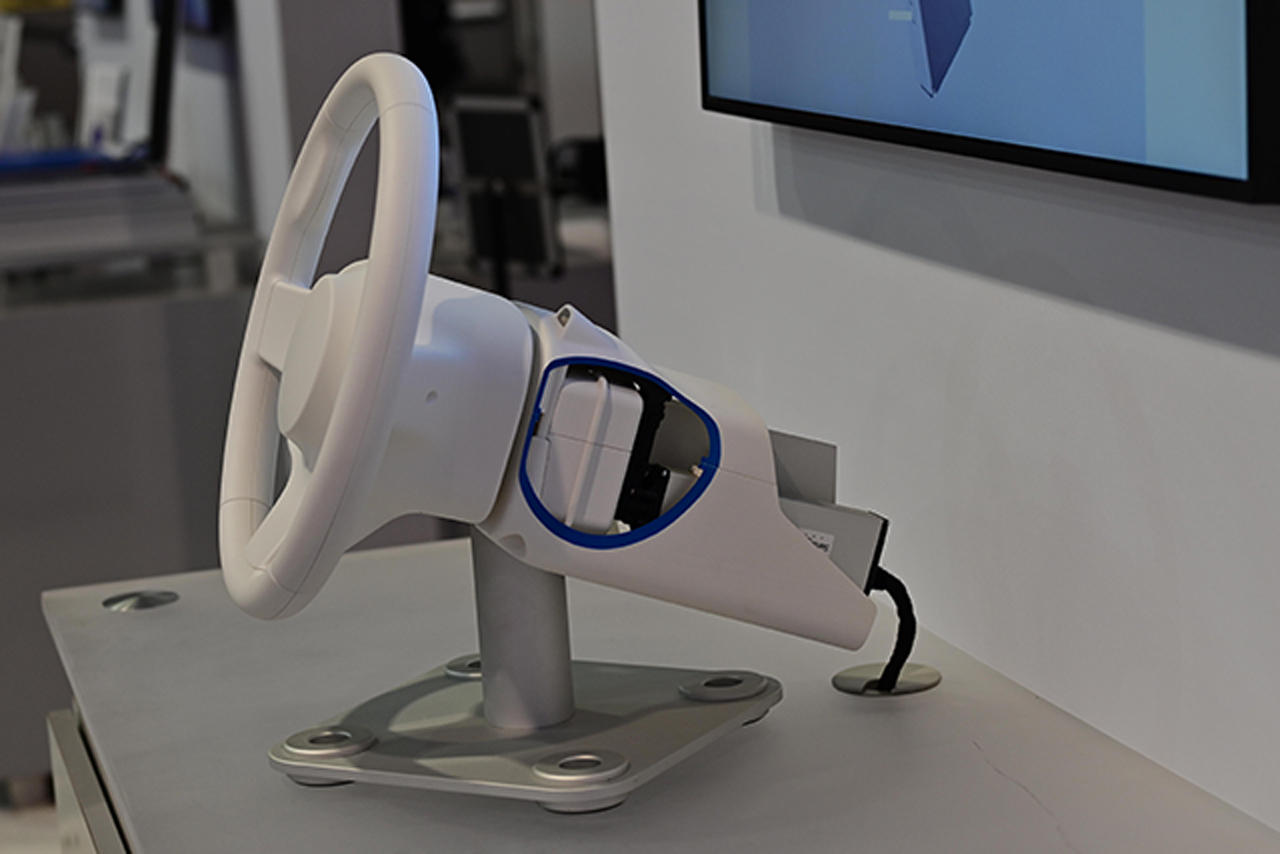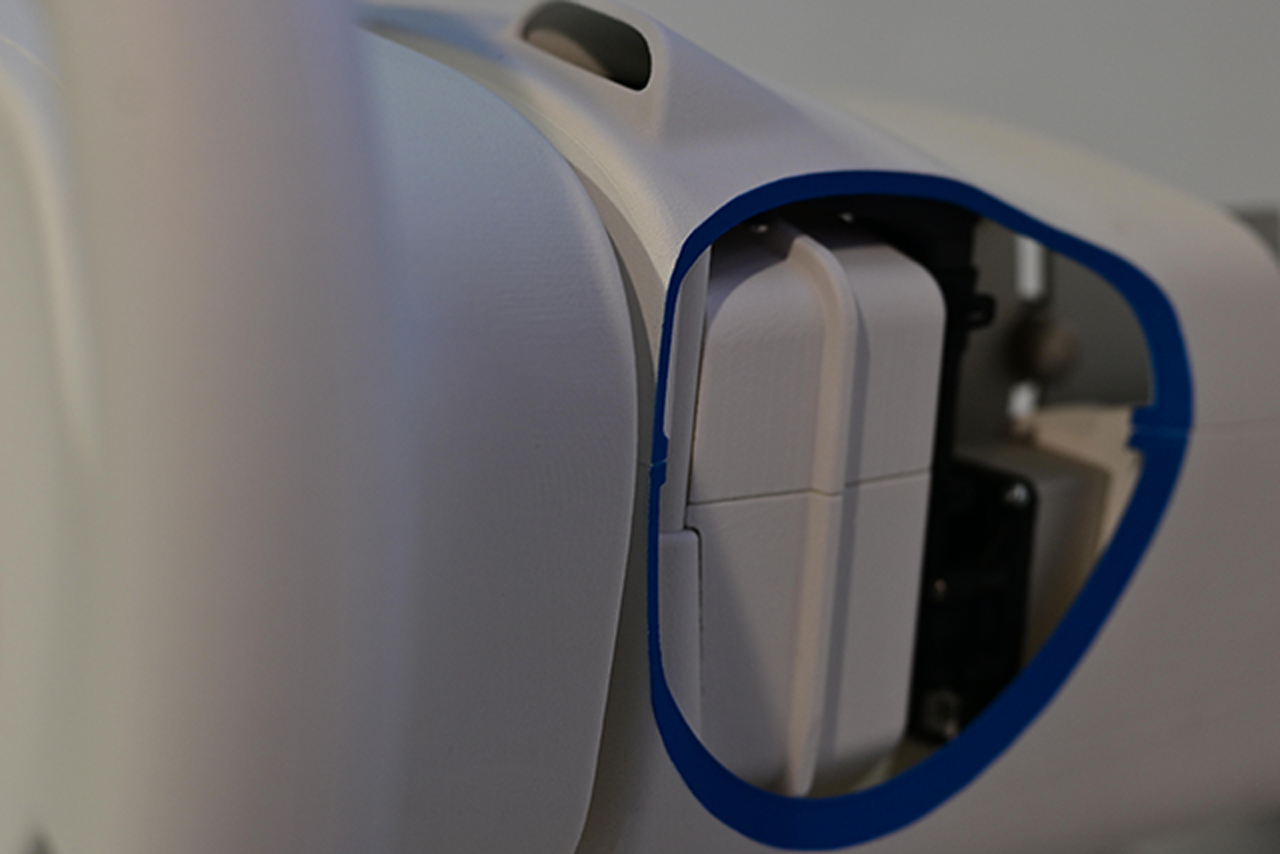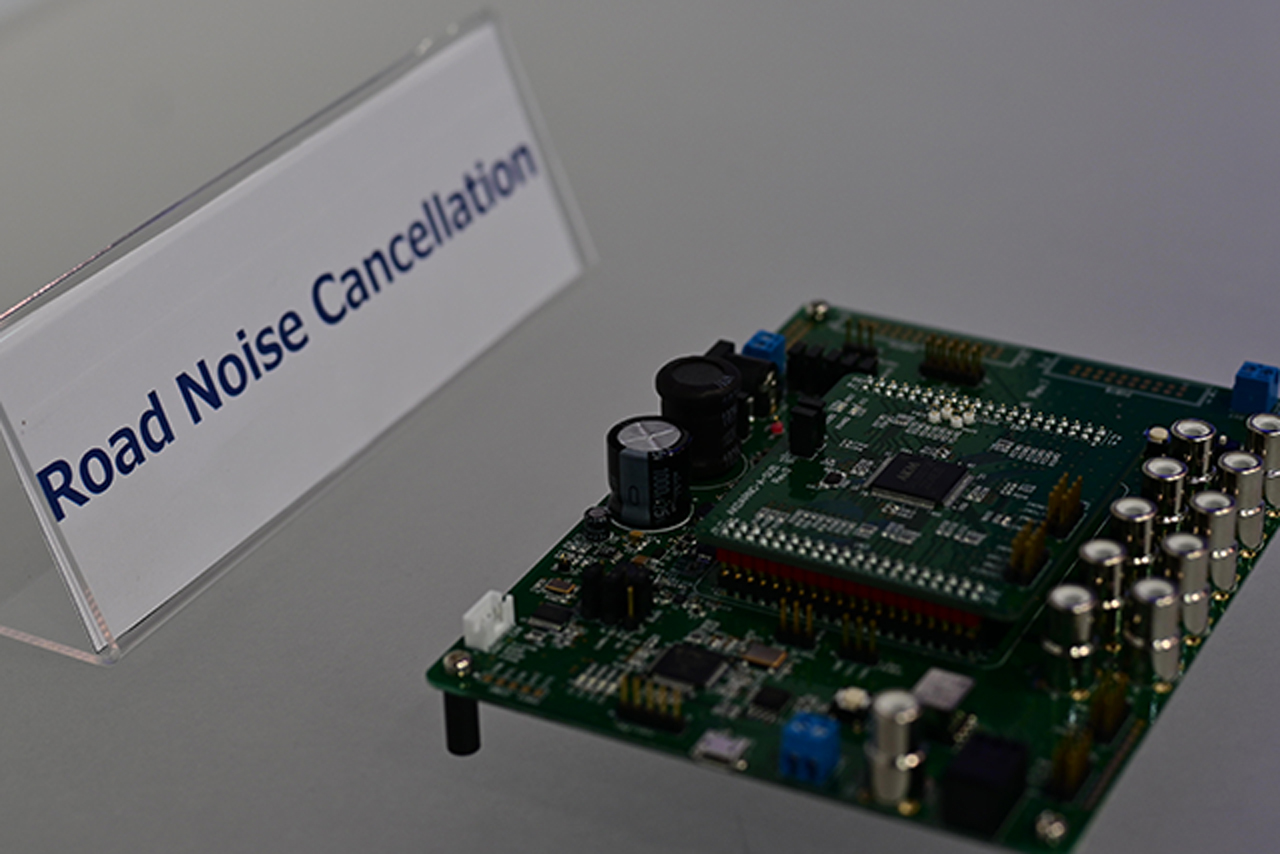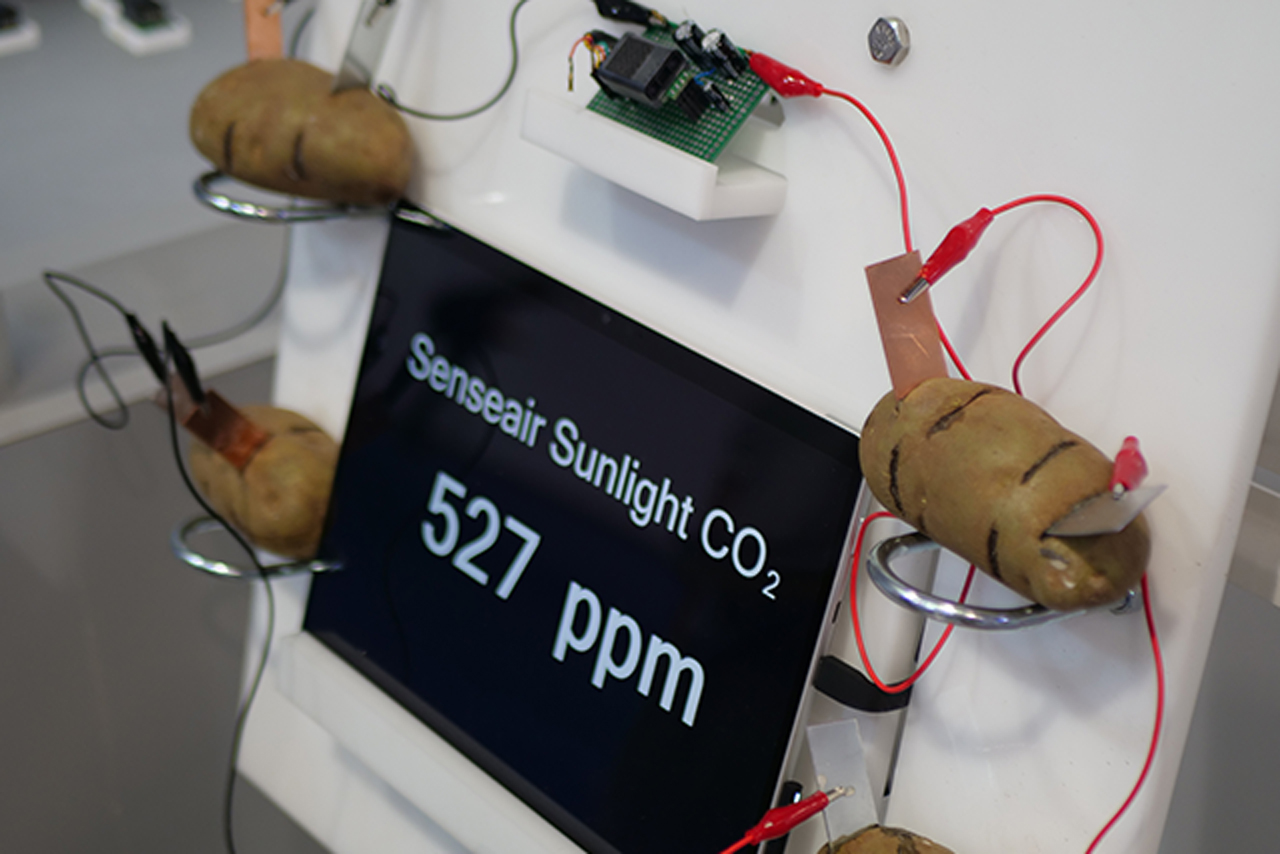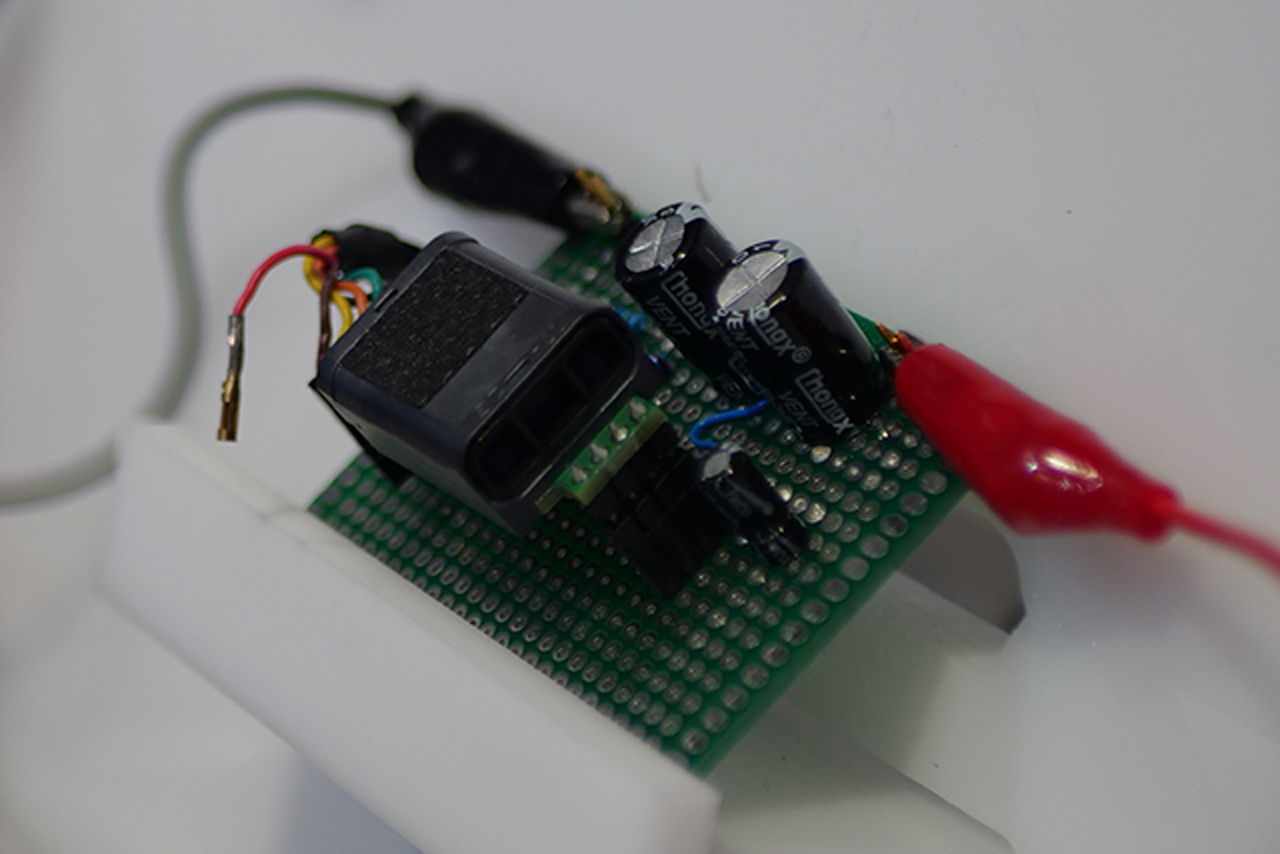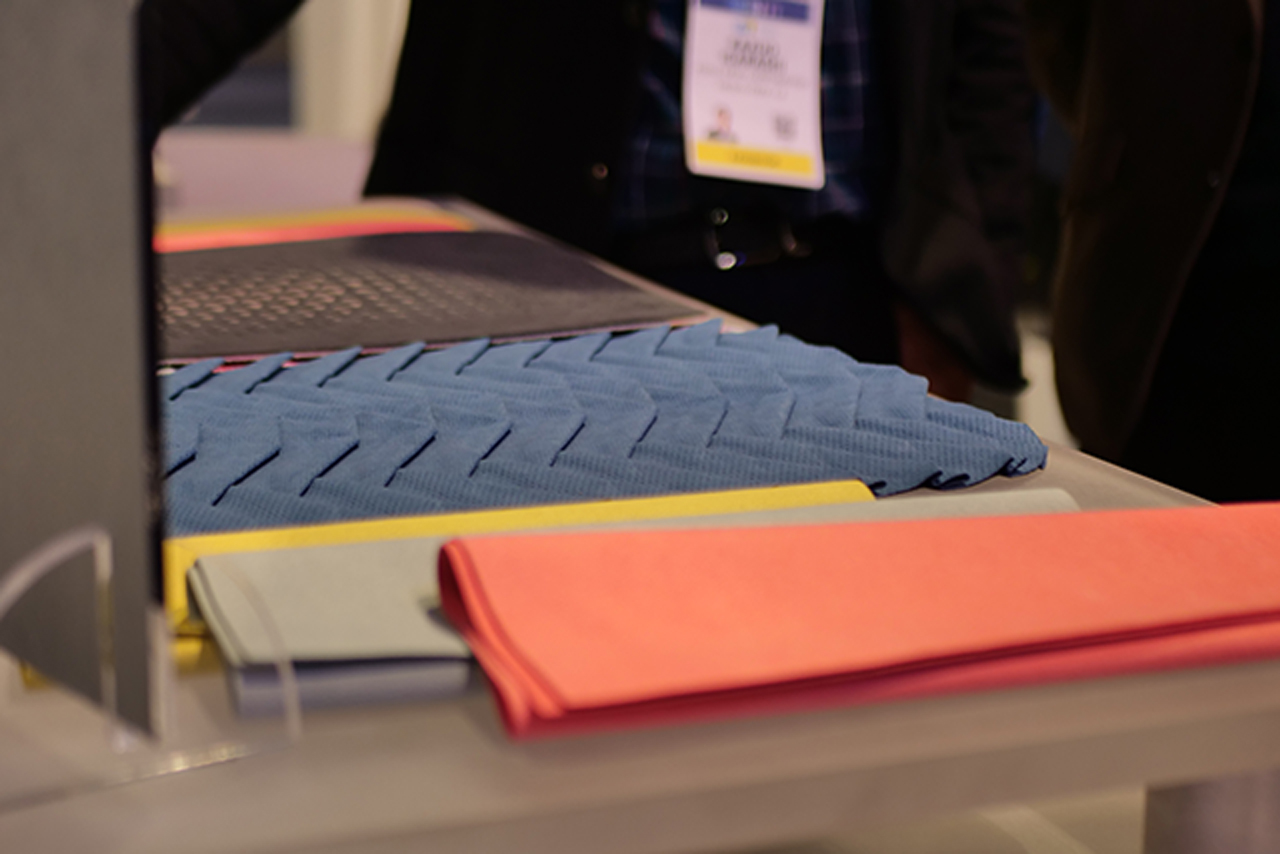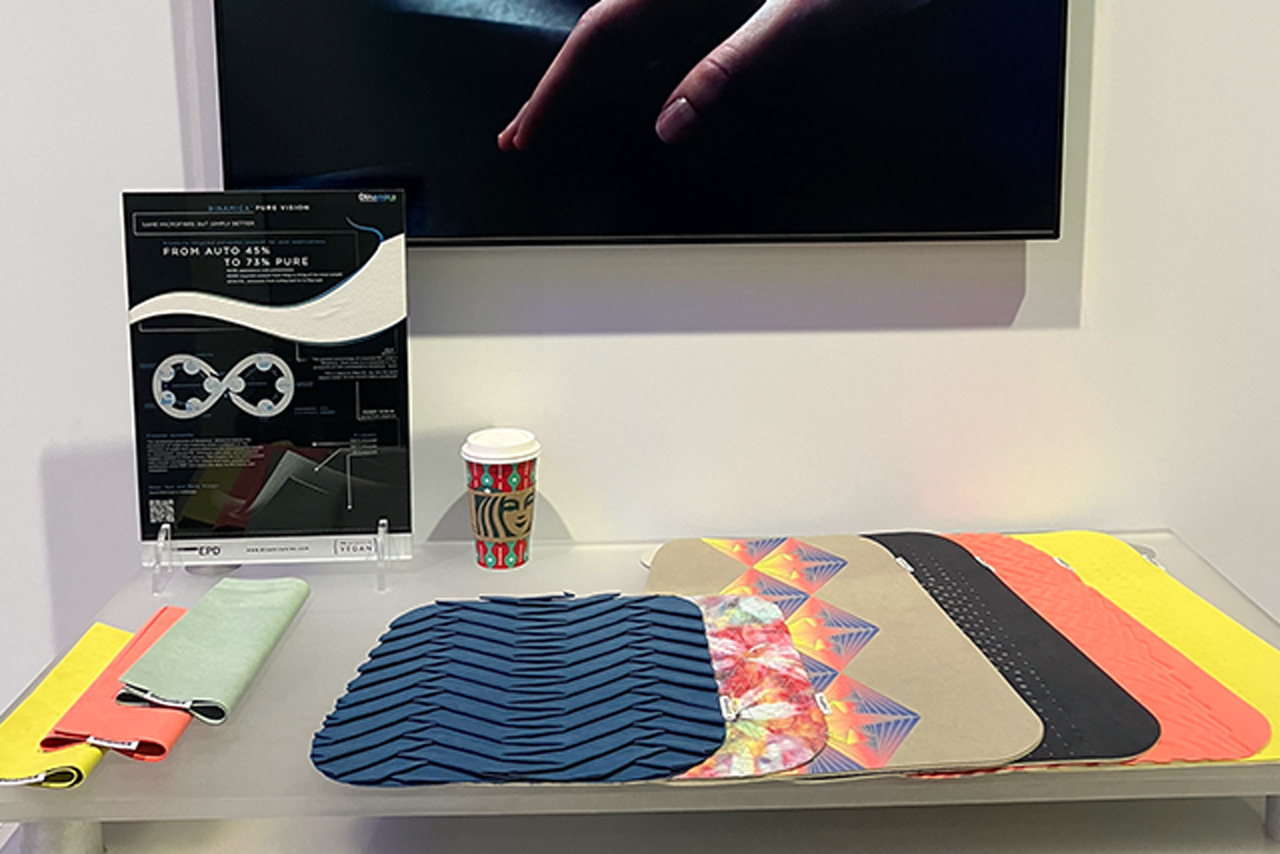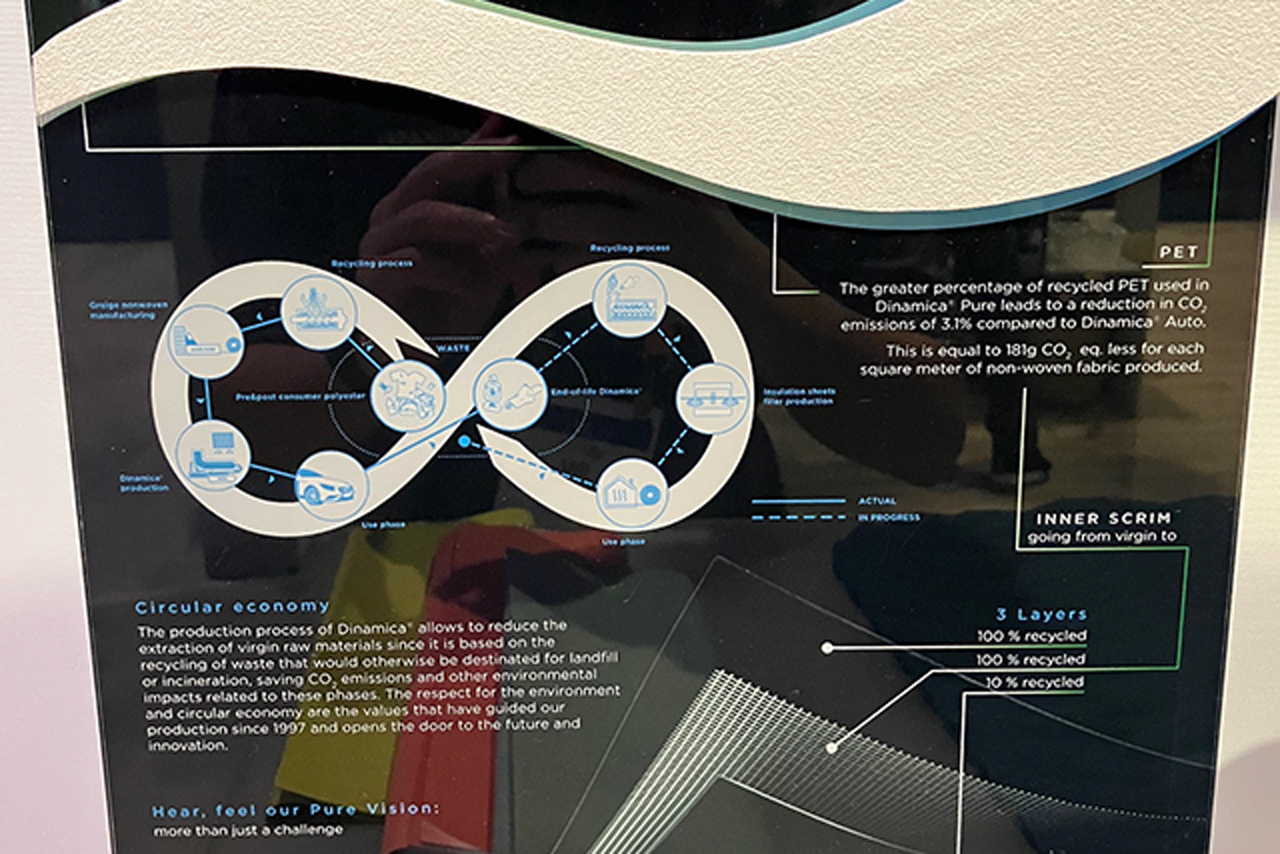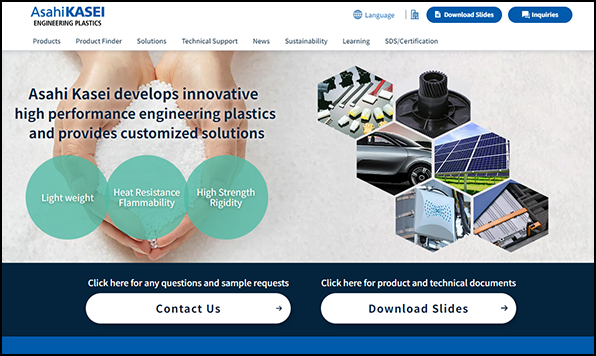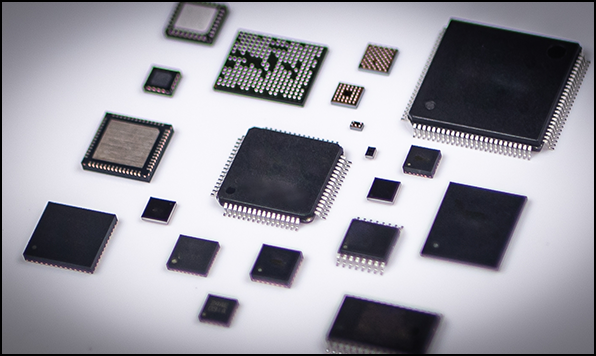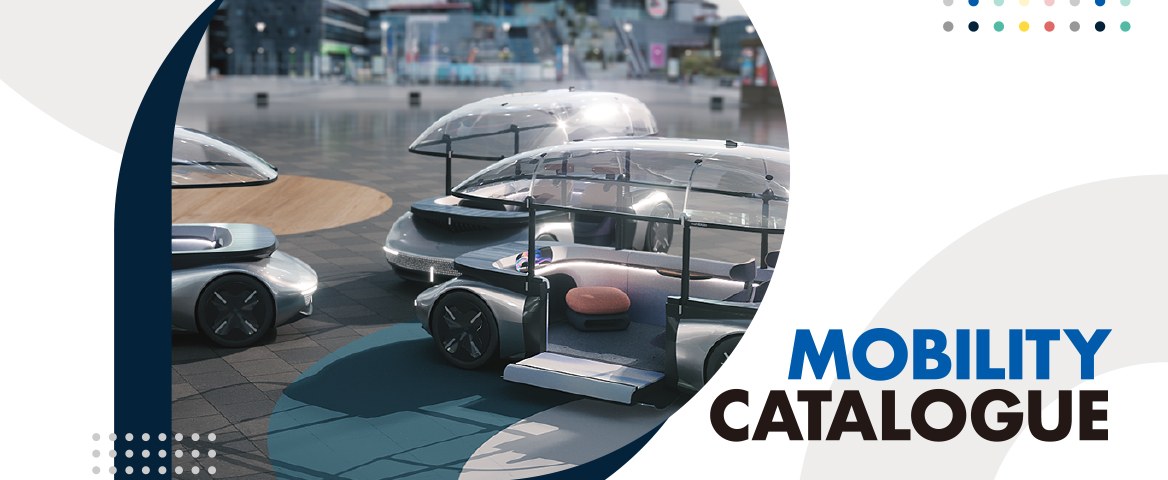
CES2023 Exhibit Report
Approximately 1,700 Visit Asahi Kasei Booth
at CES® 2023
Thank you for visiting our booth.
2023.01.05 - 01.08
REPORT
Highlights of the Mobility Sector
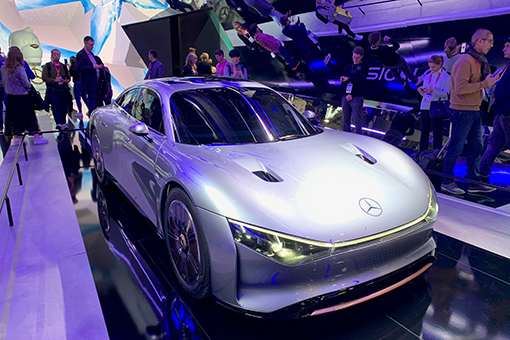

With recent progress in digitization and electrification, mobility-related exhibits are an increasing presence at CES with every show. This year, industry companies set up prominent booths in the Las Vegas Convention Center’s West Hall, a dedicated exhibition area for transportation and vehicle technology. The space was fuller and more crowded than last year, when many exhibitors refrained from exhibiting due to the COVID-19 pandemic.

First up, for complete vehicle manufacturers, Mercedes exhibited their concept EV, the Vision EQXX. With its high-density battery and solar cells, along with a body designed for aerodynamic performance, the Vision EQXX achieves a range of 1,200 km with a single charge. At the VW booth, VW’s software subsidiary CARIAD made its first CES appearance, looking to expand its business in North America. The new generation EV minivan ID.Buzz equipped with a CARIAD platform was on display. In the outdoor pavilion, the BMW booth attracted attention with its new concept model, the I Vision Dee (for “Digital Emotional Experience”). As the name suggests, the I Vision Dee is an interesting concept that allows users to control the immersive experience level in mixed reality through intuitive operation on an HUD projected on the front windshield. In addition, BMW gave an impressive demonstration of the I Vision Dee shuffling through 32 exterior colors in an instant. This expanded on the company’s iX Flow exhibit last year, a hot topic which used E ink technology to change the body color between black and white. Outside the German automakers, several Stellantis brand EV concept models were on display, including Peugeot, Jeep and Dodge models. Next to the Ram electric pickup truck, scheduled for release next year, an EFI Automotive robot placed under a large body EV chassis common to the Stellantis Group to demonstrate automatic wireless charging. GM, in collaboration with Microsoft, also offered a game that places the player in the driver’s seat of a Cadillac Lyriq through OnStar, GM’s connected service. Visitors went wild over the new in-vehicle experience.

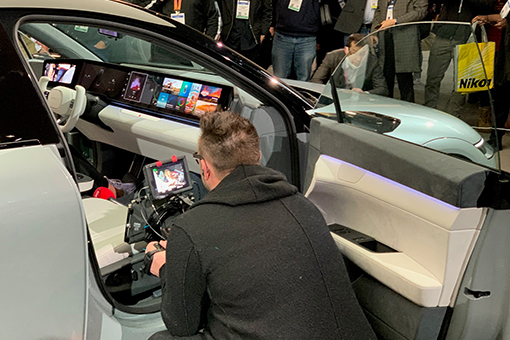
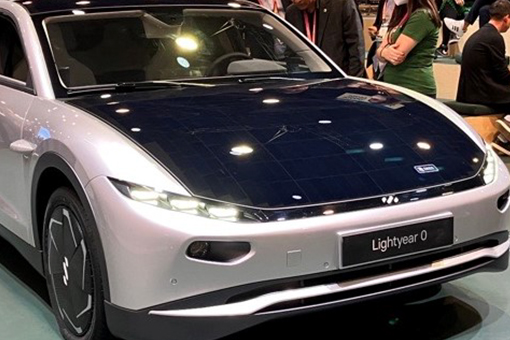
Looking at the emerging EV players, the prototype EV sedan AFEELA at Sony Honda Mobility’s exhibit attracted particular attention this year. As with BMW, the Sony and Honda stance is also targeting high-level integration of mobility and soft services. Features included vehicle communication with the outside via a content-utilizing Media Bar, personalization based on user recognition by the vehicle, and the ability to provide a seamless entertainment experience between home and car. The new horizon of mobility is now coming into view as manufacturers have nailed down the basic performance as a car, allowing the axis of competition to shift to digital experiences to strengthen person-vehicle connections. The booth for Vietnam’s VinFast, which was also a hot topic at last year’s CES, displayed a new vehicle to be released alongside the new VF8 EV already on sale. In addition to ADAS, OTA, and other advanced functions, VinFast also introduced their vehicle production process to commence North American production. Togg, an emerging Turkish EV manufacturer that also exhibited last year, did not have a real car to exhibit like VinFast, but made a strong appeal for using cars to pursue experience value, particularly through linking with Trumore, a Togg-developed app. Dutch startup Lightyear exhibited their Lightyear 0, slated for mass production soon. By combining hood-and roof-mounted solar cells good for 70 km of driving range per day, the Lightyear 0 can travel more than 1,000 km on a single charge in everyday situations. The Lightyear 0 incorporates independently controlled in-wheel motors on each wheel to achieve cleaner energy use and efficiency.


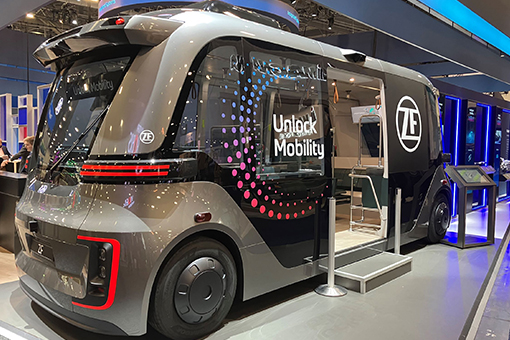
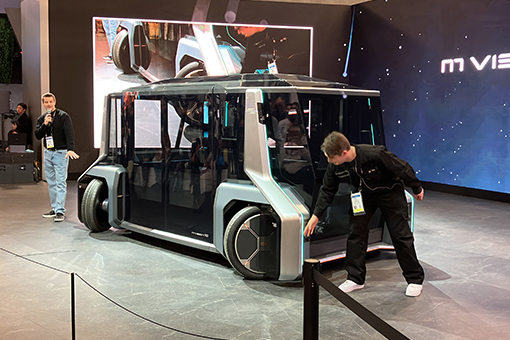

The mobility booths at CES featured more than just passenger cars. Electrification and autonomous driving solutions for commercial vehicles and construction/agricultural machinery also drew crowds. US commercial truck giant PACCAR exhibited the T680E, an EV truck sold under the Kenworth brand, as well as a range of fast chargers and a hydrogen fuel cell model of the T680. For the Peterbilt brand, PACCAR showed a Model 579, equipped with LiDAR, exterior cameras, and radar, as well as a body with support for a Level 4 autonomous driving system. The CES content highlighted the accelerating trends in the commercial vehicle market toward BEV/FCEV adaptations, infrastructure development, and active investment in autonomous driving technology. In construction and agricultural machinery, the booths of Caterpillar and John Deere, respectively the largest construction and agricultural machinery companies, dominated. John Deere exhibited various solutions aimed at improving agricultural efficiency through AI and the latest connected technology with the theme of solving food issues. Located almost dead center in the West Hall, Caterpillar’s massive Cat® 777 dump truck supported driverless operation and 24-hour remote fleet management. The Cat® 777 is about the height of a two-story building and weighs approximately 100 tons. The truck was brought to the CES venue in parts and assembled on site.

The MaaS-related technologies on display also showed further progress towards social implementation. MaaS vehicle operation solutions and achievements by Germany’s ZF were showcased at both the ZF and Microsoft booths. Having entered commercial operation in 1997 and transporting a cumulative total of more than 20 million people, ZF’s solution has made the most commercial progress among the exhibiting companies this year. They debuted an EV shuttle bus with Level 4 autonomous driving support, with plans to partner with US mobility service provider Beep and deploy thousands of units across the United States in the coming years. Korean companies also made their momentum felt at this year’s CES. Among them, Hyundai Mobis unveiled two autonomous driving concept vehicles with scalability for a variety of usage cases: the M.VISION TO and M.VISION HI. The M.VISION TO in particular was feature-packed, including the e-Corner System, which offers crab driving and 360-degree turning for narrow urban spaces, as well as communication lighting and an on-stage mixed reality demonstration. Meanwhile, among Japanese companies, Toyota Boshoku garnered attention by putting interior space utilization and accessibility for the age of autonomous driving front and center with the MX221, its MaaS concept model. The demonstration of wheelchair boarding and exiting was particularly impressive. The ease with which it changed layouts and fixed the wheelchair in place gave the impression that it could eliminate the hassles of care support and resolve some familiar social issues. While each of these manufacturers exhibited passenger MaaS vehicles and presented future visions of vehicles and people coexisting, other companies focused on logistical MaaS. At the booth of Cenntro, a commercial EV startup with locations in the United States and China, the iChassis open platform for autonomous driving caught the eye. Cenntro offers a chassis in different sizes depending on the logistical MaaS application, and loading sections are customizable. In addition, a wide variety of exhibits were on display, from heavy trucks equipped with hydrogen fuel cells to small delivery BEVs. Similar in concept to Cenntro, Australian startup Applied EV showcased a solution utilizing Blanc Robot, their modular EV platform for logistical MaaS at their booth. The company emphasizes its Digital Backbone (DBB) vehicle control system as its core product, but as the phrase “software-defined machines” implies, DBB is their key to integrating hardware and software.



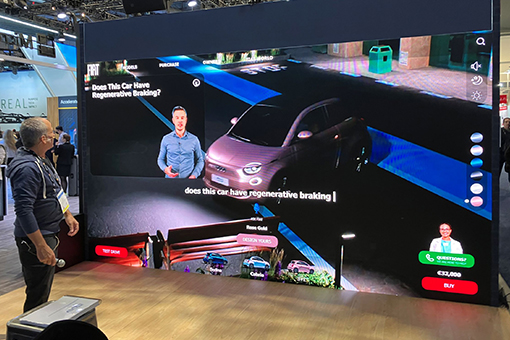
Finally, let’s touch on the mobility-related exhibits of the big tech players. In the West Hall, Amazon’s booth featured a Jeep Grand Wagoneer equipped with Alexa and Fire TV, Amazon’s voice assistant and a streaming media player, as standard equipment. Rather than designing a whole center console GUI, it appeared that Amazon was still implementing its services as apps. Zoox, an Amazon-owned autonomous driving subsidiary [If already bought out by Amazon, “subsidiary” might be better than “startup”.], also had its own booth to introduce its robotaxis and public road driving models. Meanwhile, Google announced an Android Auto update which allows Android smartphones to connect to the in-vehicle display. In Google’s outdoor pavilion, the Volvo EX90, a new electric SUV equipped with a large, vertically-mounted center screen compatible with Android Auto, was unveiled. In addition, Google stated that smartphone-based digital car keys, used to date in select BMW models, can now be shared with family and friends, and that the feature will be expanded to other complete vehicle manufacturers. The aforementioned EX90 is also equipped with smartphone-activated door locks and interior temperature controls. At its booth, Microsoft promoted collaborations with a variety of mobility companies in everything from its own cloud services to development of automation solutions. Fiat’s virtual showroom had an impressive new car purchase demonstration utilizing Microsoft metaverse technology. Across the GAFAM [Facebook is now Meta, so GAMAM may be better. Please confirm here and below.], their goals seemed to be achieving an even more seamless user experience between everyday life and mobility. It will be very interesting to see how GAFAM will impact mobility system platforms in the future.


Asahi Kasei Booth
Care for People, Care for Earth
Asahi Kasei Group exhibited at CES® 2023, the world’s largest technology exhibition, held from Thursday January 5 to Sunday January 8, 2023, in Las Vegas, Nevada [Added for clarity.], USA. Approximately 1,700 visited the booth, from the automotive and consumer electronics industries and beyond.
Exhibition
01
AKXY2 Concept Car
The AKXY2 concept car was on exhibit, created with an eye to the burgeoning future of autonomous driving.
Many visitors described it as “cool”, or “a car of the future”.
Exhibition
01
AKXY2 Concept Car
The AKXY2 concept car was on exhibit, created with an eye to the burgeoning future of autonomous driving.
Many visitors described it as “cool”, or “a car of the future”.
Exhibition
02
Alcohol Detection Sensor to Prevent Drunk Driving
With more than 10,000 people dying every year in drunk driving accidents in the United States,*1 there is a pressing need to introduce a technology to prevent drunk driving. This exhibit demonstrated a built-in steering wheel sensor that automatically detects alcohol on the breath in seconds. By linking it with the engine, this sensor enables an alcohol interlock system to be used to cut off the engine when alcohol is detected.
Exhibition
02
Alcohol Detection Sensor to Prevent Drunk Driving
With more than 10,000 people dying every year in drunk driving accidents in the United States,*1 there is a pressing need to introduce a technology to prevent drunk driving. This exhibit demonstrated a built-in steering wheel sensor that automatically detects alcohol on the breath in seconds. By linking it with the engine, this sensor enables an alcohol interlock system to be used to cut off the engine when alcohol is detected.
Exhibition
03
Road Noise Cancellation Technology for Enhanced Cabin Comfort
As autonomous driving spreads, demand for in-vehicle entertainment is expected to increase. Applying active noise cancellation technology as used in True Wireless Stereo (TWS) headphones, road noise cancellation technology for reducing noise while driving was showcased.
Exhibition
03
Road Noise Cancellation Technology for Enhanced Cabin Comfort
As autonomous driving spreads, demand for in-vehicle entertainment is expected to increase. Applying active noise cancellation technology as used in True Wireless Stereo (TWS) headphones, road noise cancellation technology for reducing noise while driving was showcased.
Exhibition
04
Next Generation Heating, Ventilation, and Air Conditioning (HVAC) Solutions
A technology to advance HVAC were on exhibit
A CO2 sensor that monitors in-vehicle air quality and automatically controls ventilation to optimize energy consumption
This CO2 sensor operates even at ultra-low power. This exhibit featured a demonstration measuring CO2 from the minuscule power obtained from six potatoes and displaying it on an external Bluetooth device.
Exhibition
04
Next Generation Heating, Ventilation, and Air Conditioning (HVAC) Solutions
A technology to advance HVAC were on exhibit
A CO2 sensor that monitors in-vehicle air quality and automatically controls ventilation to optimize energy consumption
This CO2 sensor operates even at ultra-low power. This exhibit featured a demonstration measuring CO2 from the minuscule power obtained from six potatoes and displaying it on an external Bluetooth device.
Exhibition
05
Automotive Interior Materials Using More Recycled Materials
The new PURE lineup of man-made leather products, widely used as automotive interior materials, was also on exhibit. PURE comprises 73% recycled products, up from 45% in the AUTO line. PURE uses more recycled material with no change in appearance or performance.
Exhibition
05
Automotive Interior Materials Using More Recycled Materials
The new PURE lineup of man-made leather products, widely used as automotive interior materials, was also on exhibit. PURE comprises 73% recycled products, up from 45% in the AUTO line. PURE uses more recycled material with no change in appearance or performance.
 Mobility-related information website
Mobility-related information website
